WHAT YOU REALLY NEED TO KNOW
ABOUT COSMETIC SURGERY
Full Text from Dr. Berman's Book
Chapter 6
THE SPACE LIFT - AUTOLOGOUS FAT TRANSPLANTATION
(FAT - GRAFTING)
The concept of removing fat from one part of the body and injecting it into another part of the body is one of the most exciting to be added to the field of cosmetic and reconstructive surgery. While fat transplantation has been done in various ways for some time (first recorded in the late 1800's), the concept of fat transplantation by micro-injection is relatively new.
Why would we want to use fat as a grafting tool? For one thing, we should realize that one of the main causes of aging is the apparent loss of fat in one's face. Typically, we think of the aging face as one in which the skin and underlying muscles have stretched in response to wear and tear and the effect of gravity. While this is true to some extent and can often be repaired with more traditional procedures, such as a face-lift, we find that the loss of fat may be an even greater contributor to the appearance of aging. If we only look at the round cheeks of a baby and compare that with the more hollowed appearance of an adult it is clear that there are tremendous changes in the distribution of fat. The skin may be thought of as an envelope and the underlying fat and muscles as the contents. As the contents thin out, then there will be a relatively larger envelope. In the case of the face, this will appear in the form of sagging or wrinkles. If we could replace fat in some of these areas, then we might be able to restore a more youthful and attractive appearance.
There are also cases where fat would be useful to help repair certain deformities. Many cases exist where people have sustained fat loss as a result of trauma, or from an occasional reaction to an improperly injected medication, or even as a result of a birth defect. Fat could also be used to enhance certain facial features such as areas around the cheeks or chin. Indeed, fat can also be used to sculpture other parts of the body, such as the buttocks, combining it with liposuction surgery.
How does fat-grafting work? Basically, by using liposuction techniques, fat can be harvested from one part of the body and then re-injected into another part of the body where it is needed. Since the fat is injected in the form of free cells then it must be re-vascularized in order to survive. Therefore, the fat that is not re-vascularized (i.e. does not obtain a blood supply) will subsequently die and be reabsorbed into the body. This is different from collagen which is ultimately reabsorbed because of a rejection reaction in which the body eventually clears the material because it is a foreign substance. When it is one's own fat it can not be rejected. However, fat does not survive equally well in different parts of the face or body. For example, it survives very well when we use it to fill out the hollows around the eyes we often see congenitally or with aging, but does not do as well around the mouth. I believe this is because the mouth must frequently move (to talk, eat, smile, etc.) thus making it harder to re-vascularize the transplanted fat. In such a case, only part of the transplant would survive thus necessitating further treatments until sufficient quantities have survived to obtain the desired result. Recent animal studies suggest that fat graft survival is enhanced by implantation into muscle. Muscle, of course, has superior vascularity and should improve the chances of the re-vascularization of the fat cells. Treatments can generally be repeated every two or three months because the fat that does not survive is reabsorbed rather quickly. Thus, after a few weeks all of the swelling will be gone and the surviving fat will remain. It should last indefinitely because it is now a living part the patient.
The operation itself usually takes from 1½ to 2 hours, or it can be done in combination with other procedures such as a face-lift or blepharoplasty. It is usually done under local anesthesia with intravenous sedation. It can be done in the office surgical suite as an out-patient without any need for hospitalization. The fat is usually taken from the lower abdomen through a tiny incision hidden in the belly button or pubic area, or from the inside part of the thighs through a tiny incision hidden in the crease of the groin. It can however, be taken from other areas of the body as well. After the fat is harvested it is "washed" and then readied for injection. The areas to be treated then receive the fat by injection through inconspicuous sites. The patients are started on antibiotics prior to surgery and for a few days thereafter to prevent infection (which is very rare). Pain is minimal yet a light narcotic like Tylenol with codeine is sufficient if there is the need for analgesia.
Fat grafting can be used for several specific areas. In the face there are two areas that seem to show the effects of fat loss the earliest, namely the area around the mouth and then the area around the eyes. Most likely this occurs because they are areas sitting right on top of muscle which is frequently in use. Additionally, the large buccal fat pad that spreads throughout the cheeks and around the facial muscles dissipates with time. This dissipation of fat probably accounts for the most significant visual changes. Realize that we all start out with a layer of fat between the skin and muscle, but over time there is a gradual dissipation of the fat which then allows the skin to come in closer approximation with the muscle below. The contractions of the muscle directly on the skin are a major cause of the breakdown in the skin which shows up as small lines and creases. Around the lips this is most noticeable and thus an excellent area for fat-grafting, although one that usually needs repeated treatments. The area around the lower eyelids is a good area to treat. As the cheek thins out in this area the underlying orbital structures become more visible. Often the bony orbital rim becomes rather prominent. Many times we see this problem after traditional lower lid blepharoplasty because too much fat has been removed. This is seen with the upper eyelid also. With traditional blepharoplasty, the upper eyelid, though no longer sagging, often ends up looking sunken and abnormally rounded. We can place fat back around the brow to re-create the softer images of the youthful eyelid. The creases between the nose and lips (nasal/labial folds) often become more prominent as fat is lost from the cheek area. It too can be treated. Other areas treated in the face include the cheeks and occasionally the chin. Deep scars, congenital deformities and other post-surgical defects can also be treated.
Fat grafting can also be used elsewhere on the body. The "aging hand" appears that way also because of loss of fat under the skin and it too, lends itself well to fat-grafting. Inadvertent depressions from previous liposuction surgery can often be corrected with this technique as can other post-surgical, traumatic or iatrogenic (caused by the doctor) defects. Fat grafting can also be done to build up areas such as the buttocks. If there is excessive fat around the hips or thighs, this can be suctioned, cleaned and implanted into the buttocks to sculpt out a rounder silhouette. Again, it appears results are enhanced by injection deep into the muscular tissue.
One other special area needs to be mentioned, namely the breast. While it seems an ideal area for augmentation through fat-grafting it is also a fairly controversial area at this time. While it is true that fat-grafting does work in this area there are some real and theoretical problems with it here. The most regarded problem is that of micro-calcification. As noted before, not all of the fat survives upon transplantation. When the fat cells die they are mostly reabsorbed, but during the process there is often some scar tissue formation which could go on and become slightly calcified. The fear is that when a woman gets a mammogram there may be micro-calcifications which would thus warrant biopsies to rule out a possible cancer. While there have been a host of reasonable arguments both pro and con the procedure at the present time is still rather controversial.


The patient presented with a long, thinned out face from significant depletion of fat volume. With fat grafting techniques, her face could be filled and rounded, providing a softer, more feminine appearance.
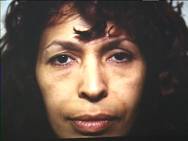

Although a small amount of fat was removed from the lower eyelid via a "transconjunctival blepharoplasty", fat grafting was mainly responsible for softening her facial features and filling her brow, which smoothed the upper eyelid wrinkles without a skin excision.
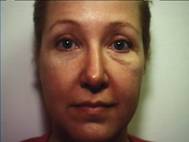
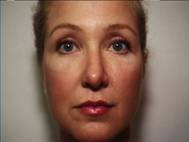
This patient had several operations on her eyelids to correct the lower lid defect before fat-grafting corrected her problem.
Like any operation there are some degree of risks. Most people are worried about unfavorable results, particularly lumpiness. Initially, there may be some firmness in conjunction with local tissue swelling, but as that settles down it is very rare to have firm lumps, as fat itself is very soft. While some doctors over-correct the treated areas I have found this to be unnecessary. In areas, such as around the eyes, the fat tends to "take" very well and over correction may lead to excessive bags. On the other hand, areas such as the lips do not take the graft as well and overcorrecting there will only lead to wasted fat which can not be re-vascularized and will thus reabsorb. I do however, tend to put more fat around a larger area of the lips, in a sense over correcting by area. Infection, bleeding, or problems related to anesthesia are all exceedingly rare. Lumpiness is avoided by keeping the placement deep.
Fat-grafting through micro-injection may just well be the most revolutionary procedure to come along for the treatment of the aging face in the last decade. It is not a perfect procedure, but it is safe and replaces the needed material with the bodies own source.



The same patient as seen before, one week, and four weeks following surgery. At one week after a face-lift and facial fat grafting, the patient looks much younger and prettier. Not all of the fat survives this first session and much of the swelling goes down. Though she looks better at four weeks than before surgery, clearly, adding volume (fat) in the future is the key to her rejuvenation.
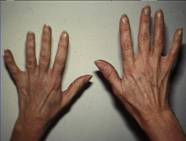
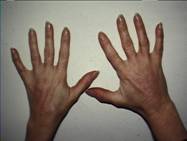
Hands, too, can be fat grafted to achieve a more youthful appearance.